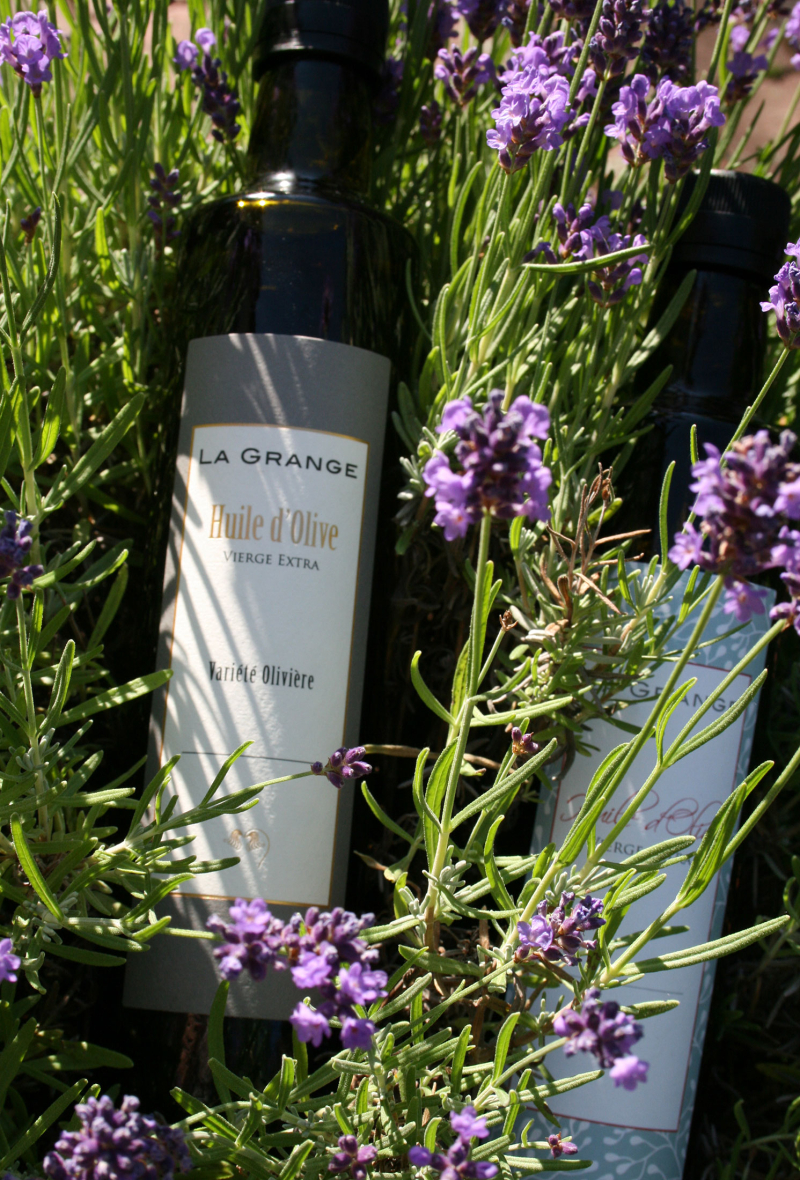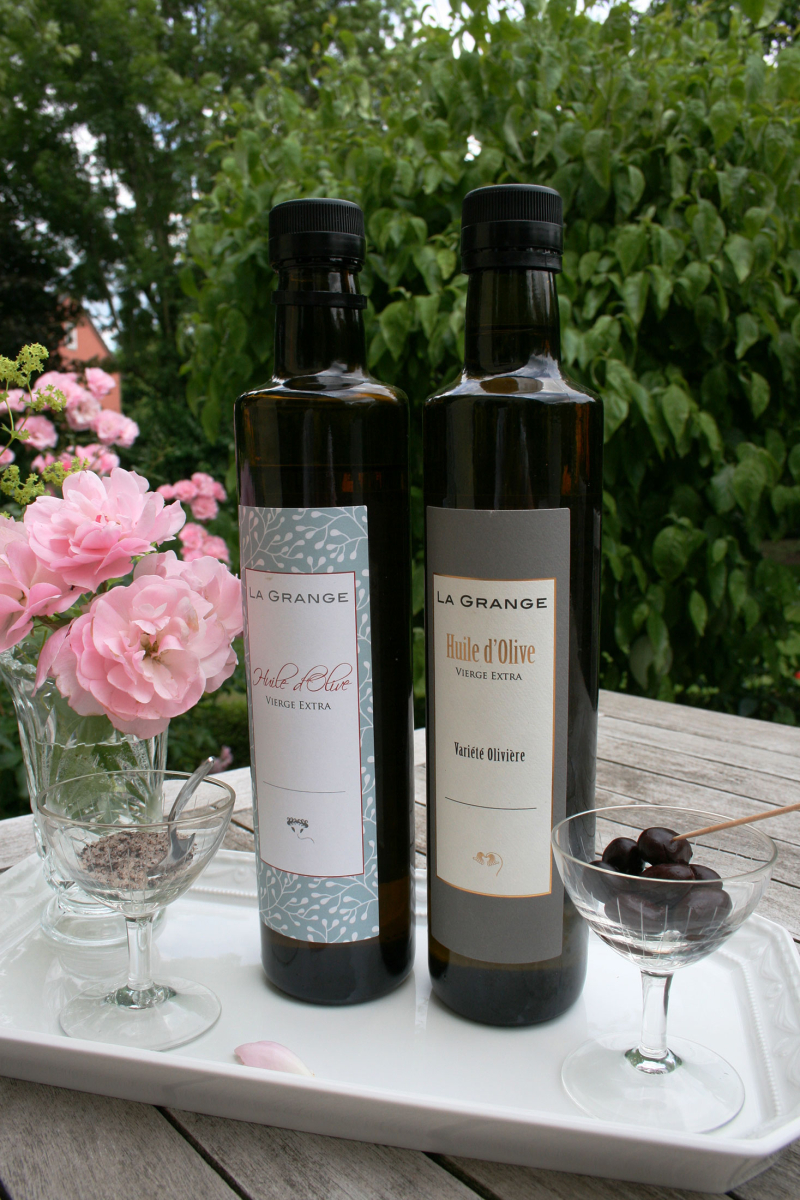News

The new La Grange olive oils – An interview with Rolf Freund
Aside from wine, more and more winemakers also produce olive oil. What makes a good olive oil and what should we be mindful about when it comes to the additional business of olive oil? These are some of the questions we asked Rolf Freund, owner of La Grange winery in southern France, while we tasted his new olive oil.
‘There is an olive grove close to the La Grange winery, on a slope called Sabatier. It’s home to approximately 350 trees, interspersed with large sandstone blocks. When I visited this slope last, three generations of the Pailles family were sitting in the grass between the trees, eating baguette with paté, dinking wine and gazing at the shiny olives they had just harvested. They told me what olive varieties they were growing and were in raptures about their very own olive oil.’
And that’s when passion struck you?
‘I immediately fell in love with the idea of making my own olive oil. During the next couple of years we planted more and more olive trees on the slopes of the winery. We waited impatiently for them to mature and to start growing olives. Then, six years ago, the project really gathered momentum when the Pailles family asked if we wanted to buy their olive grove. We did and that was the beginning of our La Grange olive oil.’

What made you change and expand your olive oil range this year?
‘We met Eric Martin. He is one of Frances experts for olive oils and has an estate in Ardèche. That’s where he produces the best and the most famous french olive oils. We tasted his oil, he tasted ours. The vigor and the purity of his oils were impressive and it became clear that our oil also has more potential that was yet to be exploited. So we asked Eric to help us produce high end olive oils. He worked out a detailed plan and since then our trees are pruned differently, we use different fertilizers and we follow made-to-measure procedures during harvest and the processing of our olives.’
It’s a long way from olives to a finished olive oil ready for consumption: What are the crucial factors in producing a high end olive oil?
‘The first and most important factor is the time of harvest. We want to produce olive oils that are healthy, meaning that they contain few free fatty acids. We wanted to produce oil that is well protected against oxidation and stays fresh and young for the longest time possible. To reach these goals the olives have to be harvested really early on, when they are still green. These green olives give our oil a maximum amount of fresh green aromas.
The second decisive factor is the immediate processing of the olives. At La Grange the olives are harvested by hand. We harvest much earlier than all the estates surrounding us. The oil mill opens earlier in the year just for our sake and we are the only ones who deliver olives at that time of year. We deliver each morning’s harvest to the mill in the afternoon, all neatly stored in small cassettes. Because the olives are green the yield is very small. For the Olivière Variety we need 8 kg of olives to produce one liter of oil.’
This is the moment the oil is most stressed…
‘Every minute counts now! After pressing the oil is immediately filtered so that the lees won’t influence the taste and the freshness. The quality of oil decreases rapidly due to oxidation because contact with oxygen increases the number of free fatty acids, and thereby the oils taste.The olive oil looses freshness and storability – a very important criterion later on in the selling process. After pressing the oil is immediately stored in small stainless steel tanks and covered with an additional layer of nitrogen to protect it from contact with oxygen. That way freshness and purity are preserved. For bottling we use dark bottles because the oil becomes rancid quickly when in direct contact with sunlight.

We tend to associate olive oil with mediterranean cooking, sunkissed and delightful. So how is it doing in the rather conservative german oil-market?
‘Although olive oil is proven to be healthier than sunflower oil, german cooking uses little olive oil. We use less than one liter per person per year in preparing our food. That makes about 0,8 L per person per year. The italians use ten times that amount. In Spain they consume our yearly olive oil ration in only a month. The per person intake of olive oil is about 1 L a month(!) in Spain. So you could say there is potential for healthy living in Germany.’
Is it true that those who consume an increasing amout of high-quality wines also consume high-quality olive oil?
‘Surely there is a connection. Most of the the olive oil that is sold in the german food retail sector comes from large producers and is priced accordingly. The individual, top-level olive oils made by small producers are being sold in delicatessen shops, in shops that specialize in wine and the gourmet-shops in the internet. It really is an advantage when the producer also makes wine. The good associations the consumer has towards the already established wine-brand are easily transferred toward the diversification, in this case the olive oil. These considerations surely play a big role for the winemakers. It’s worthwhile to tell every wine-buying client ‘do also try the olive oil … of La Grange… for example. ‘
What difference in taste may the consumers expect from the new La Grange olive oil range?
‘A good olive oil has to have three characteristics: It has to be fruity, bitter and it’s finish nees to be peppery. Our new Sélection Variétale has an expressive personality. It’s like a basket full of ripe fruit. You can find aromas of artichoke, banana and hazelnut. The oil we used to produce also showed good fruit aromas. Only they were not as diverse, not as harmonious as we find them in the new Sélection Variétale. Harmony is really the central theme here. The fruity aromas mix with stimulating bitter tones, accompanied by a invigorating pungency at it’s finish. And all these tastes flow together in great harmony.
To this you now add the single-variety olive oil ‘Variété Olivière’?
‘Exactly. Variété Olivière is more vigorous and has more aromas of green than of ripe fruit. There are mostly aromas of green tomato, basil and of almonds. Invigorating bitter tones and a peppery tang make for an aromatic taste with a beautiful clarity and freshness. The La Grange olive oil has become more aromatic, more pure and healthier. The amount of free fatty acids is the most important factor determining the quality of olive oil. Extra virgin olive oil may only contain a maximum amount of 0,8g free fatty acids per 100g olive oil. Previously the La Grange olive oil had 0,3g free fatty acids. The new oils have top values: Sélection Variétale has 0,21g, Varieté Olivière has only 0,15g of free fatty acids per 100g.’
How and with what dishes do you personally prefer to consume olive oil?
‘I’m not only a fan, I’m in love with olive oil. Some evenings I eat nothing else than baguette steeped in olive oil. Heavenly! In our kitchen we prepare every dish with olive oil. We fry our meat in olive oil, sweat flour, make dressing for salads, all with olive oil.

We use Sélection Variétale for meat and vegetables, Variété Olivière for fish, poultry and salad. The oil seems to magically magnify the taste of fish and poultry. When served, we add a dash of olive oil on top of it, as a wonderfully healthy seasoning. A good olive oil makes cooking more fun, healthier and more refined. ‘
Thank you for the interview, Mister Freund!